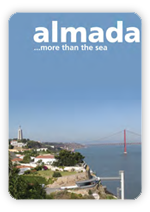Location
2nd Luso-Brazilian Meeting on the History of Tropical Medicine is held in two locations:
October 14 and 15
Faculty of Sciences and Technology of New University of Lisbon (FCTUNL)
Campus do Monte de Caparica (south bank of River Tagus)
Faculty map
You can find a PDF map of the buildings within the Faculty hosting the event in this link.
Access by conference bus
Buses leave at 8:30 a.m., from the hotels located at Costa da Caparica to the Faculty. We strongly recommend participants to take the conference bus, as alternative transportation is time consuming.
From Costa da Caparica
More information will be available soon.
From Lisbon City
Access by local train and metro: Take the train line FERTAGUS that has a stop at train station Entrecampos, near Metro stations Entrecampos, to Pragal station (just accross the Tagus River). From there take the metro in the direction "university" . FCTUNL campus is at the final stop.
Access by bus: Nr. 158 — Praça de Espanha to Trafaria. Stop at campus FCT/UNL. Once every hour, each 40 minutes past the hour. Nr. 161 — Areeiro to Casas Velhas. Stop near campus FCT/UNL. Once every 30 minutes.
Access by taxi: Advisable specifically for 3 or 4 persons (total around 30€).
Access by car: Parking inside Campus will be available during the conference.
At the end of sessions at FCT/UNL on Tuesday, September 2, there will be a conference bus to Lisbon (metro station Marquês de Pombal) for participants who have not registered for the conference dinner.
October 16
Institute of Hygiene and Tropical Medicine (IHMT)
Rua da Junqueira Nº100, 1349-008 Lisboa
Contacts and website: +351 213 652 600 (general inquiries) or +351 213 632 105
Email: informacao@ihmt.unl.pt
Website: www.ihmt.unl.pt
Directions available soon. Please visit this page regularly for updates.
Tourist information
For participants staying at Costa da Caparica hotels, we recommend the following brochure produced by the Almada City Hall, which highlights the best sights on the south Tagus River bank area.

